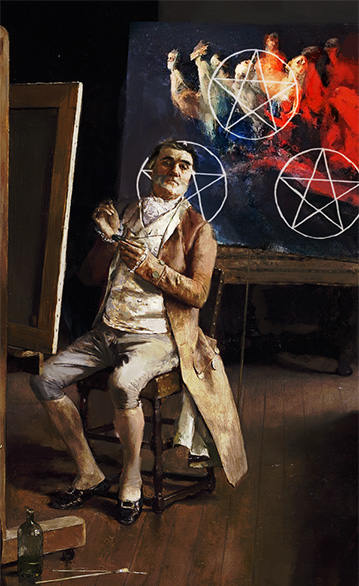Difference between revisions of "Template:Occult.live:Today's featured article"
Jump to navigation
Jump to search
Occultwiki (talk | contribs) |
Occultwiki (talk | contribs) |
||
| Line 1: | Line 1: | ||
[[File: | [[File:Christoph Haizmann.jpg|250px|left]] | ||
'''[[Christoph Haizmann]]''' (1647 - 1700) was a Bavarian painter active in Austria. He is remembered for signing a [[diabolical pact]] with [[Satan]] and the subsequent [[exorcist|exorcism]] to free him from the pact. | |||
In 1666, Christoph performed a ritual invocation to summon [[the Devil]] in an effort to find relief from his depression. Showing Christoph his true form and swearing to assume the role of his deceased father convinced the despondent man to sign a [[diabolical pact]]. Christoph wrote the pact in black ink in his native German language. It was short and simple: “I Christoph Haizmann, am writing to this Gentleman (the Devil) to be his son for the next nine years.” He found work as a painter in the Austrian city of Pottenbrunn and lived there for many years. | |||
'''([[ | '''([[Christoph Haizmann|Full Article...]])''' | ||
Revision as of 17:05, 23 June 2022
Christoph Haizmann (1647 - 1700) was a Bavarian painter active in Austria. He is remembered for signing a diabolical pact with Satan and the subsequent exorcism to free him from the pact.
In 1666, Christoph performed a ritual invocation to summon the Devil in an effort to find relief from his depression. Showing Christoph his true form and swearing to assume the role of his deceased father convinced the despondent man to sign a diabolical pact. Christoph wrote the pact in black ink in his native German language. It was short and simple: “I Christoph Haizmann, am writing to this Gentleman (the Devil) to be his son for the next nine years.” He found work as a painter in the Austrian city of Pottenbrunn and lived there for many years.
